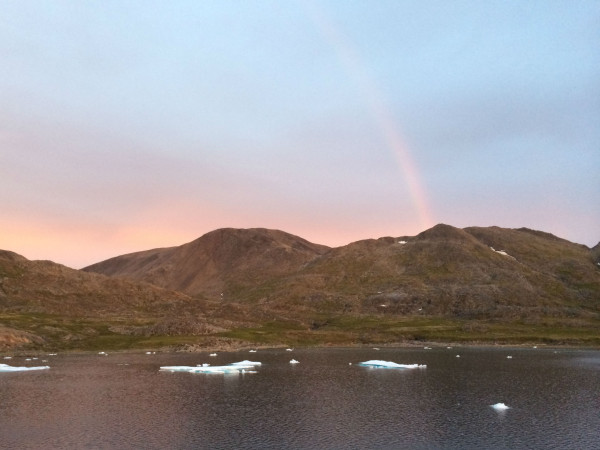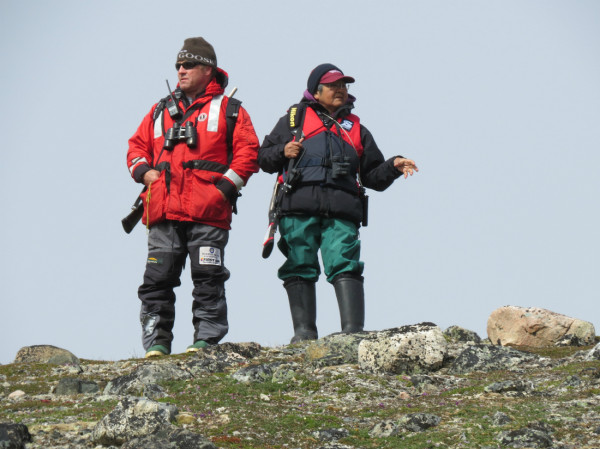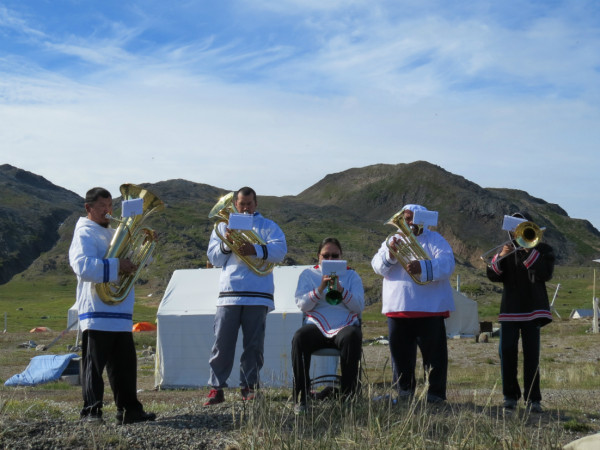Students on Ice: Exploring Torngat
Written By: Sue Novotny, Communications Officer, Global Arctic Program, WWF
WWF is part of a “Students on Ice” expedition from Arctic Canada to Greenland, both sponsoring students, and helping give the students useful skills. WWF staff member Sue Novotny is on board, and is sharing her experiences from the expedition in a special five-part blog series.
Bears, bears, everywhere
Komaktaviq Fjord, Torngat Mountains National Park, Labrador
Here on the Labrador coast we are seeing and hearing of the mixing of nature that’s beginning to occur with climate change.
First we see signs of polar bears – they’re not showing themselves today but the evidence is everywhere. Within a half hour hike, we come across a napping spot here, some fresh scat there, and a tuft of fur.
In the Torngat Mountains, where the bears far outnumber people, visitors are strongly advised to hire one of the local Inuit bear guards. The guards know the region inside and out, and are experienced in spotting bears, reading their behaviour, and scaring them away long before they can approach a person. Each time we set foot on land, the guards precede us, scouting the hills.
It’s a place that is changing rapidly, says one of the guards from the Torngat base. Armed with a rifle, rubber bullets and a bear banger, he accompanies hikers out on the land all summer long. He’s seeing black bears, moose and more southern birds in greater numbers, ever further north. They’ve also observed polar bears catching fish in much the same way grizzlies do.
With the guards keeping lookout, we picked our way to the top of a deceptively steep mountain. Happily, neither black bears nor polar bears seem interested in tangling with our group of 130 people. From our vantage point on top of the mountain, we could see for who knows how many kilometres in every direction – but no bears in sight.
Torngat memories and memorials
Traditionally, ships visiting this part of Labrador would be met with an incongruous sight – a brass band dressed in traditional Inuit clothing. The bands are an artifact of Moravian missionaries who came to the region in the late 1700s. According to the staff of Torngat Mountains National Park, it’s been decades since these bands welcomed a ship. But today our zodiacs arrived at basecamp to trumpets, horns and trombones playing Moravian songs unchanged for over 100 years.
Torngat’s basecamp is home to researchers, park managers, bear guards and visitors. Paninnguaq, our WWF scholarship winner from Sisimiut, Greenland, shared some of her highlights from basecamp:
“I loved that it looked like home. Mountainous, and the same vegetation. But [home doesn’t have] ice blocks on the shore. I got to use an ice table for lunch [fresh char and bannock, cooked by elders on the beach]. I loved that we went to a waterfall to get water for our bottles. And to hear elders talk about how they were moved from their communities. It was very emotional. We really understood what it had been like.”
Few people get a chance to visit Canada’s northern parks, and I doubt many have been welcomed so warmly, by so many people. Even fewer have seen what we’ve seen over the past few days.
We made a solemn visit to the remote village of Killiniq, left abandoned in 1978 by forced relocation of its residents.
We climbed a mountain that hadn’t been climbed in the memories of any of the elders we met, for a view of the landscape that hasn’t been seen for untold years. And as the brass band played the ship off, perhaps another first – a rainbow appeared, and at the end, a mountaintop inukshuk. A perfect way to say goodbye to Canada before sailing to Greenland.




